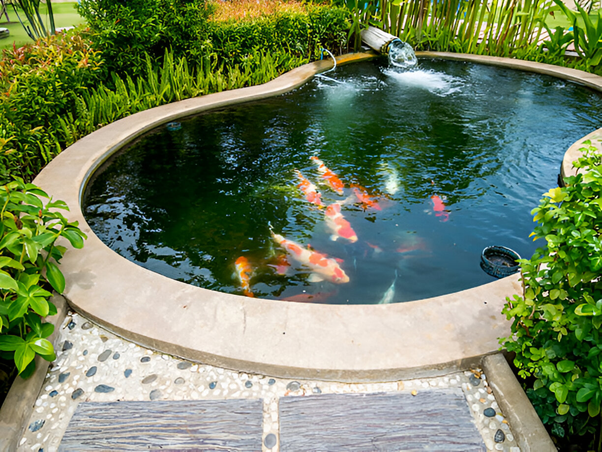
Duckweed spreads rapidly across ponds which creates significant detrimental impacts for underwater life. This floating aquatic plant sits atop surface water while blocking sunlight from both submerged vegetation underneath and the surface of above the water. Effectively controlling duckweed requires a dual strategy which includes physical harvesting alongside improvements to the pond conditions.
That Pond Guy specializes in delivering customized pond services to assist maintain a healthy aquatic environment. You can create an environment that naturally suppresses the growth of duckweed by using instruments like Evolution Aqua Pond Pumps that promote water circulation and prevent stagnation.
Water Inspection
Pond water checking should be a regular practice to detect duckweed at its earliest stages. Small green aquatic plants can be identified through observation on surface waters while distinguishing between common and great duckweed. You should check the population count regularly for unexplained growth bursts.
The assessment of pond pH levels serves as an essential measurement because it reveals the growth potential for duckweed populations. Efforts to manage this invasive species control problem should start immediately since suitable conditions exist.
Physical Removal of Duckweed
Regular manual removal stands as the most successful method to eliminate duckweed infestations. Using a net or pond vacuum enables the effective removal of large amounts of duckweed floating on your pond’s surface. Such pond maintenance approaches show modest efficacy in slowing the plant’s growth, especially during summer when duckweed typically expands fast.
Investing in pond skimmers or utilizing nets helps prevent leaves and debris from accumulating, limiting nutrients that aid duckweed growth.
Improving Pond Conditions
The prevention of duckweed infestations in your pond requires precise understanding alongside strong control of pond environmental conditions. Nutrient values within water, together with circulation patterns, are essential elements that must receive attention. The ecological habitat of Duckweed consists of environments featuring abundant nutrients, including nitrogen and phosphorus.
To control this, you can reduce organic waste by removing decaying leaves, as well as monitor nutrient levels with regular water testing. Introducing Evolution Aqua Pond Pumps can help increase water movement, making the environment less favourable for duckweed. Improving water circulation also helps maintain oxygen levels, which are vital for other aquatic life.
Biological Control Methods
In addition to mechanical measures, biological control can be quite efficient in managing duckweed. Introducing fish that eat duckweed, such as grass carp or tilapia, can help limit its growth.
Furthermore, supporting aquatic plants like water lilies might shade the pond, reducing area for duckweed to flourish. Duckweed numbers can be organically regulated by creating a balanced ecosystem with both plant and animal life.
Chemical Treatments and Careful Application
If manual or biological methods are not enough, herbicides can be considered as a last resort. Always be cautious with their application and ensure that you are using pond-safe products that target only duckweed. To avoid causing harm to other plants or aquatic life, carefully follow the manufacturer’s recommendations.
With careful care, regular maintenance, and the right equipment, you can efficiently control duckweed and keep your pond healthy.
